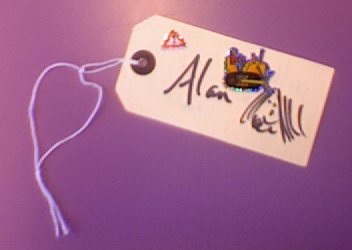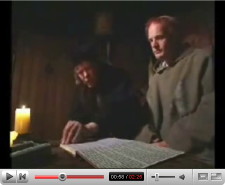A recent Blog Kindle post asked “Is Amazon’s Kindle Destroying the Publishing Industry?“. The post defends Kindle seeing the traditional publishers as reactionaries, whose business model depended on paper publishing and, effectively. keeping authors from their public.
However, as an author myself (albeit academic) this seems to completely miss the reasons for the publishing industry. The printing of physical volumes has long been a minimal part of the value, indeed traditional publishers have made good use of the changes in physical print industry to outsource actual production. The core value for the author are the things around this: marketing, distribution and payment management.
Of these, distribution is of course much easier now with the web, whether delivering electronic copies, or physical copies via print-on demand services. However, the other core values persist – at their best publishers do not ring fence the public from the author, but on the contrary connect the two.
I recall as a child being in the Puffin Club and receiving the monthly magazine. I could not afford many books at the time, but since have read many of the books described in its pages and recall the excitement of reading those reviews. A friend has a collection of the early Puffins (1-200) in their original covers; although some stories age, some are better, some worse, still just being a Puffin Book was a pretty good indication it was worth reading.
The myth we are being peddled is of a dis-intermediated networked world where customers connect directly to suppliers, authors to readers1, musicians to fans. For me, this has some truth, I am well enough known and well enough connected to distribute effectively. However for most that ‘direct’ connection is mediated by one of a small number of global sites … and smaller number of companies: YouTube, Twitter, Google, iTunes, eBay, not to forget Amazon.
For publishing as in other areas, what matters is not physical production, the paper, but the route, the connection, the channel.
And crucially Kindle is not just the device, but the channel.
The issue is not whether Kindle kills the publishing industry, but whether Amazon becomes the publishing industry. Furthermore, if Amazon’s standard markdown and distribution deals for small publishers are anything to go by, Amazon is hardly going to be a cuddly home for future authors.
To some extent this is an apparently inexorable path that has happened in the traditional industries, with a few large publishing conglomerates buying up the smaller publishing houses, and on the high street a few large bookstore chains such as Waterstones, Barnes & Noble squeezing out the small bookshops (remember “You’ve Got Mail“), and it is hard to have sympathy with Waterstones recent financial problems given this history.
Philip Jones of the Bookseller recently blogged about these changes, noting that it is in fact book selling, not publishing that is struggling with profits … even Amazon – no wonder Amazon want more of the publishing action. However, while Jones notes that the “digital will lead to smaller book chains, stocking fewer titles” in fact “It wasn’t digital that drove this, but it is about to deliver the coup de grâce.”
Which does seem a depressing vision both as author and reader.
- Maybe unbound.co.uk is actually doing this – see Guardian article, although it sounds more useful to the already successful writer than the new author.[back]

 The workshop covered loads of ground and included the design and then construction of a real application – part of the project’s methodology of research through design. However, two things that I want to write about. The first is the way the workshop made me think about the ontology or maybe semiology of tags and tagging, and the second is a particular tag (or maybe label, notice?) … on a toilet door … yes the good old British scatological obsession.
The workshop covered loads of ground and included the design and then construction of a real application – part of the project’s methodology of research through design. However, two things that I want to write about. The first is the way the workshop made me think about the ontology or maybe semiology of tags and tagging, and the second is a particular tag (or maybe label, notice?) … on a toilet door … yes the good old British scatological obsession.